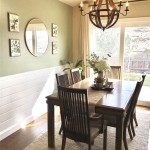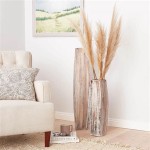The Enduring Appeal of Grey and White Room Decor
Grey and white room decor has maintained its popularity across various interior design trends, offering a versatile foundation suitable for diverse aesthetic preferences. Its enduring appeal stems from its inherent neutrality, adaptability, and capacity to create a sense of calm and sophistication within a living space. This color palette provides ample opportunity for personalization through the integration of textures, patterns, and accent colors.
Understanding the nuances of grey and white as design elements is crucial for achieving a balanced and visually appealing room. Grey, far from being a monotonous shade, exists on a spectrum ranging from cool, almost blue-toned greys to warm, beige-influenced greys. Similarly, white encompasses a variety of hues, including crisp, modern whites, creamy off-whites, and even whites with subtle pink or yellow undertones. The selection of specific shades of grey and white should be carefully considered to complement the room's lighting, size, and intended atmosphere.
Achieving Balance and Harmony in Grey and White Interiors
The key to successful grey and white room decor lies in achieving a harmonious balance between the two colors. An overabundance of grey can lead to a somber atmosphere, while excessive white can create a sterile or clinical feel. A well-designed grey and white room incorporates a strategic distribution of both colors, considering their impact on the overall perception of space and light.
One approach involves using grey as the dominant color for walls or large furniture pieces, while white serves as an accent color for trim, ceilings, and smaller decor items. This approach can create a sense of groundedness and sophistication, particularly when using deeper shades of grey. Conversely, white walls with grey accents can create a brighter and more airy feel, suitable for smaller rooms or spaces with limited natural light. The choice between these approaches depends largely on the individual's preferred aesthetic and the existing characteristics of the room.
Consider the paint finish when selecting grey and white paints. Matte finishes tend to absorb light, creating a softer and more muted effect, which can be ideal for bedrooms or living rooms. Semi-gloss or glossy finishes reflect more light, making them suitable for kitchens, bathrooms, or areas where durability and ease of cleaning are paramount. The interplay between color and finish can significantly impact the overall ambiance of the room.
Furniture selection also plays a critical role in balancing grey and white. A grey sofa can be paired with white accent chairs and a white coffee table to create a cohesive and inviting living area. Conversely, a white sofa can be complemented by grey armchairs and a dark grey rug to add depth and contrast. The key is to ensure that the furniture pieces work together to create a visual balance that is both aesthetically pleasing and functionally appropriate.
Lighting is an essential element in any interior design scheme, but it is especially important in grey and white rooms. The cool undertones of certain greys can be amplified by cool lighting, creating a stark and sterile atmosphere. Warm lighting, on the other hand, can help to soften the coolness of grey and create a more inviting ambiance. Experimenting with different types of light bulbs and fixtures is crucial for achieving the desired effect. Natural light is also a valuable asset, and maximizing its presence in the room can significantly enhance the overall aesthetic. Consider using sheer curtains or blinds to allow natural light to filter through while maintaining privacy.
Adding Depth and Texture to Grey and White Spaces
While the simplicity of grey and white is appealing, it can also run the risk of feeling flat and uninspired without the addition of texture and visual interest. Incorporating a variety of textures is essential for adding depth and dimension to grey and white rooms, preventing them from feeling one-dimensional.
Textural elements can be introduced through a variety of materials and finishes. A knitted throw blanket on a grey sofa adds a layer of comfort and visual appeal. A sheepskin rug on a white floor provides a tactile and luxurious element. A textured wallpaper, even in a subtle grey or white pattern, can add depth to a wall without overwhelming the space. Consider incorporating natural materials such as wood, stone, or linen to introduce warmth and organic texture into the room.
Layering different textures is a particularly effective way to create visual interest. For example, a grey linen duvet cover can be paired with white cotton sheets and a textured throw pillow. A white ceramic vase can be placed on a grey wooden table, creating a contrast between smooth and rough surfaces. The possibilities are endless, and the key is to experiment with different combinations of materials and finishes to find what works best for the individual space.
Pattern is another important element for adding visual interest to grey and white rooms. A patterned rug, wallpaper, or throw pillow can break up the monotony of solid colors and add a touch of personality to the space. When choosing patterns, it is important to consider the scale and complexity of the design. Large-scale patterns can be overwhelming in small rooms, while small-scale patterns may get lost in larger spaces. Similarly, complex patterns can be visually busy, while simpler patterns can be more calming and understated.
Geometric patterns, such as stripes or chevrons, can add a modern and graphic touch to grey and white rooms. Floral patterns can add a touch of femininity and romance. Abstract patterns can add a sense of artistic flair. The choice of pattern should reflect the individual's personal style and the overall aesthetic of the room. When incorporating patterns, it is important to use them sparingly to avoid overwhelming the space. A single patterned rug or a few patterned throw pillows can be enough to add the desired visual interest without creating a chaotic effect.
Art and accessories provide another avenue for introducing depth and texture. Artwork with varying textures and colors can add visual interest and personality to a grey and white room. Consider incorporating pieces with metallic accents, such as gold or silver frames, to add a touch of glamour. Plants can also add a touch of life and texture to the space, creating a more inviting and natural atmosphere. Choose plants with varying shapes and textures to add visual interest.
Accenting Grey and White: Adding Pops of Color
While grey and white provide a neutral and versatile foundation, adding pops of color can elevate the overall design and create a more dynamic and personalized space. The beauty of a grey and white palette lies in its ability to showcase accent colors effectively, allowing them to stand out and create a focal point.
Choosing the right accent colors is crucial for achieving the desired effect. Warm colors, such as yellow, orange, and red, can add warmth and energy to a grey and white room. Cool colors, such as blue, green, and purple, can create a sense of calm and tranquility. Metallic accents, such as gold, silver, and copper, can add a touch of glamour and sophistication. The choice of accent colors should reflect the individual's personal preferences and the overall aesthetic of the room.
One popular approach is to use a single accent color consistently throughout the room. For example, a grey and white living room could be accented with pops of yellow in the form of throw pillows, artwork, and decorative accessories. This creates a cohesive and harmonious look. Another approach is to use a variety of accent colors in smaller doses. For example, a grey and white bedroom could be accented with pops of blue, green, and purple in the form of throw pillows, artwork, and bedding. This creates a more eclectic and vibrant look.
Accent colors can be incorporated through a variety of elements, including furniture, accessories, and textiles. A colorful armchair can be a focal point in a grey and white living room. A vibrant rug can add a pop of color to a grey and white bedroom. Colorful artwork can add personality and interest to a grey and white hallway. Throw pillows, curtains, and other textiles can also be used to introduce accent colors in a subtle and effective way.
Consider the intensity and saturation of the accent colors when making your selection. Bright, saturated colors can add a bold and energetic touch to a grey and white room. Muted, desaturated colors can create a more subtle and sophisticated look. The intensity of the accent colors should be balanced with the overall aesthetic of the room. If the goal is to create a calming and relaxing space, muted colors may be a better choice. If the goal is to create a vibrant and energetic space, brighter colors may be more appropriate.
The key to successfully incorporating accent colors into a grey and white room is to use them strategically and sparingly. Too much color can overwhelm the space and detract from the overall aesthetic. A few well-placed pops of color can be enough to add the desired visual interest and personality without creating a chaotic or overwhelming effect. Remember that the goal is to enhance the beauty of the grey and white palette, not to overshadow it.

40 Gray Bedroom Ideas Decor And White Decoholic Design Silver Grey

13 Gorgeous Grey Bedroom Ideas Stunning Room For You

15 Creative Gray And White Bedroom Ideas Photos

26 White Gray Bedroom Ideas Inspirations Design

45 Cozy Grey Bedroom Decor Ideas Chaylor Mads

58 Grey And White Bedroom Ideas On A Budget

58 Grey And White Bedroom Ideas On A Budget Small Room Luxurious Bedrooms Stylish Design

A Cozy Grey Bedroom Decor Coco Lapine Designcoco Design

Recreate This White And Grey Cozy Living Room Decor Livingroom Gray Apartment

13 Gorgeous Grey Bedroom Ideas Stunning Room For You







